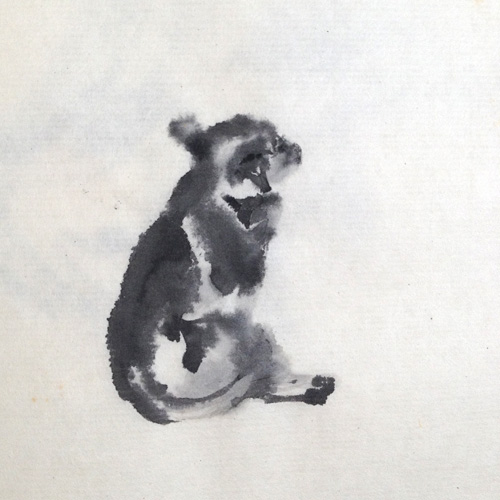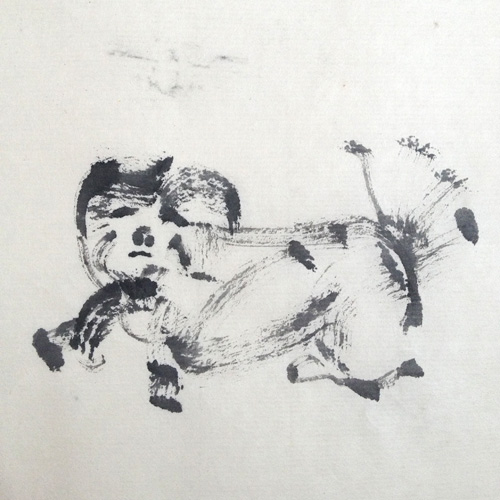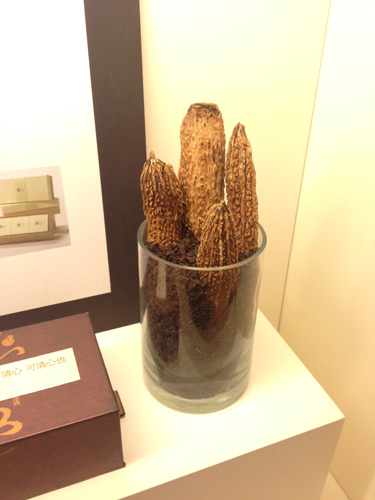Monthly Archives: April 2013
Dogs of Yunnan (and one guest)
TRUST
In this part of the world it’s hard enough to tell if you’re paying the right price for things, or whether you’re getting what you think you’re getting, but in China such worries can send you down the path to pure madness.
How do you know the quality of your hotel?
Four star hookers admiring the wood carvings in the lobby, free condoms in the rooms, clear glass separating the bed from the bathroom (with optional “modesty light” switch), and the number of people it takes to track down the Tech Guy, the one and only person who knows the wireless password.
How do you know the quality of your Pu’er tea? Was it picked from wild trees, ancient arbor, eco trees or mass production hedges?
It’s supposed to be logical by price, as explained here, but we all know better.
We live in a world of Swedish horsemeat-balls, 100% cold-pressed Italian olive oil made from Greek olives, and big fish made from many little fish. In China, if you take all the Pu’er drunk each year and sum up the years that the tea has been “aged,” you’ll get more years than the entire history of China’s existence, Imperial, Communist or otherwise.
Sure you can sit and actually taste it, but better buy it right then and there because that way you make sure the tea you buy is the tea you just drank. Though there’s always the chance they have placed good tea on the top of the bag, sitting on a mound of crappy tea, and when they scoop the tea for you, they dig deep down into the middle of the bag. My test for whether I over paid or not? Call back that evening and say you lost your hat or something and was wondering if you left it there. If they’re having a raging party, there’s your answer.
At some point you have to decide everyone in the country is on crack, or you just toss your dibs in and TRUST someone. Trust goes a long long way, in any culture, and it helps you sleep at night. But it’s also a moving target. You have to know when to smell a rat, but you have to embrace someone, somewhere, in order to learn the first thing about what these teas are supposed to taste like. Trust first, hold no grudges, and always know where your Pu’er comes from.
Of course if you’re still stressed out and develop high blood pressure China has a bunch of offerings to help you with that. This medicine for the flu cost $7 in Hong Kong, and when we found it in Guangzhou it was $2. Sure the packaging was different but the hologram sticker looked real enough. We didn’t die after drinking it, and it turns out it was the real thing, what a deal.
There’s the rare tea-stuffed pomelo.
The rare tea-stuffed bitter melon.
There’s the ultra-rare crab claw vine that grows only on tea trees that are over 200 years old. So in one shot you get proof of the age of the tea tree at the same time as you expel your own toxins.
Beware! This one’s a fake! Bastard red font!
When fate strikes in China
Pu’er might be the only tea that hurts when it hits you, but watch out when the Chinese concept of fate, “Yuan,” comes hurtling your way.
Like Schrodinger’s cat, you can’t go looking for Yuan, and when it does happen, how it manifests depends on your attitude at the moment of its appearance.
Our tea master Vesper Chan had a pretty good nose in 1992 when he tasted a tea that no one else was interested in buying. He decided to purchase the entire lot, some 30 tons of it, at something like 8 RMB a cake. Here’s a photo of the guy he bought it from, after being asked what he thought about the current selling price of 48,000 RMB.
The funny part? Our dear tea master kind of sold his lot too soon, he got the fame of having sniffed out this unbelievable tea, but didn’t score as big as he could have.
On our recent trip to China last month, my friend Linda wanted to meet face to face with James, the guy who does her printing. He had recently screwed up an order, and she wanted to decide whether to give him a second chance. Turns out James agreed not only to reprint the order for free, but he showed up with correctly printed samples and also offered to take us to the airport.
Turns out James planned for us to taste an organic crysthanamum tea his friend produced, and insisted that checking in only a half hour before the flight time would be okay.
Turns out James was wrong. But he insisted that the fact we missed our flight was meant to be (ahem), as in we weren’t allowed to leave the city until he had a chance to take us out for dinner.
So we got treated to goose-in-a-wok BBQ AND a foot massage.
Here’s how the goose started,
and as you eat it the goose continues to cook until at the end of the meal you’re left with goose and scallions BBQ’ed into pure crispy deliciousness. (That yellow stuff in the bowl that looks like soup? One of the few things in the world I’ve met that I could not stomach. Ug)
The foot massage played out exactly like the goose BBQ. It started with a neck and shoulder massage, a brief neck-cracking session, twists and backbends over the masseuses’ knees, cupping and foot massage, and then they poured alcohol on a towel on our backs and lit us on fire.
Since we were all on fire, no one was left to document the event, so here’s a video that pretty much captures it. The video also advises against getting this treatment done if you’re “mind confused,” but it’s a little late to worry about that now.
We managed to make the flight to Xixuangbanna on time the following day, and traipsed around the tea mountains visiting some really old trees.
In Nan Nor we bought some loose 2013 Pu’er, and just as we were pondering how we were going to get the fluffy delicate tea back home, we found out that the owner of our mountain inn, Mr. Chen, aka the Chinese Patrick Swayze, just happened to have a stone press for making Pu’er bricks, and he graciously turned our pain-in-the-ass bags of tea into compact bricks.
[qt:/wp-content/uploads/2013/04/puer_brick.m4v 358 640]
At dinner that night at the inn there was a group of men from the Ai Ni ethnic minority drinking local moonshine and toasting each other (“Sai sai sai!”). I just happened to be traveling with Jeni “Gimme Some of that Moonshine” Dodd so us gals sauntered over to give the other table a toast. This is not what you’d call common in China. Women don’t usually initiate a toast, much less take a drink with a table full of strangers, but hey, moonshine is moonshine.
In return they shared a traditional Ai Ni drinking song:
[qt:/wp-content/uploads/2013/04/ai-ni-drinking-song2.m4v 650 360]
The evening ended with a some more singing, Patrick Swayze belted out some Dai minority love songs that made Jeni Moonshine cry, Linda showed all of us that if her tea business failed she could make a living as a singer, and Jeffrey played the guitar while reading the chords ad hoc off my iPhone. Turns out everyone knew the words to Hotel California. The look on their faces when we told them that Linda and I were actually from California was pure Y-U-A-N, though I was a little worried the way Patrick Swayze sang “And you can never leave…”
PS. One of the guys was a Beijing official, not from the Ai Ni tribe, and I wanted to ask him exactly why Facebook was blocked in China, but the following morning when I saw him at breakfast he was wearing cute flannel PJ’s so I changed my mind.
What’s new (and old) in the tea world
Ten years ago we stumbled upon a tea house in Guangzhou called the Best Tea House Co. Ltd. The owner had an amazing place in a park complete with lake front Pu’er storage and blooming ozmanthus and olive flowers for enhanced seasoning.
Turns out not only did he look like Chevy Chase he’s also a fake. Well not really a fake but a fraud, which is actually an important distinction in China because it’s a question of provenance rather than reality. In China you generally get the product you ask for, just not necessarily the exact thing you ask for. For example if you ask for 20 year old Pu’er you’ll get Pu’er but it will be made in the “20 year old style” rather than be actually 20 years old.
The Chinese Chevy Chase apparently kyped the company name of a very famous Pu’er master from Hong Kong named Vesper Chan (yes). I guess Mr. Chan didn’t really think it was a big deal until relations between HK and the mainland improved and he was offered a retail space in the Canton Tower and realized he couldn’t trademark his own company name.
So it’s total fate that we became friends with someone in Los Angeles who actually studied from Vesper Chan so we could visit the real Best Tea House Co. Ltd.
So what’s new in the tea world?
Everywhere you see tea kettles that are attached to spigots that pump water from a five gallon jug on the floor into the kettle. No more need to tip the water boy. Hit one button and water streams through a hole in the lid and, I’m not sure if all of them do this but they stop filling when the pot is full.
What’s old in the tea world?
Here’s Master Chan with a photo of a 3200 year old tree (think Warring period, before the unification of China) and one of the tea cakes he pressed from the leaves of that tree. He had the rights to the leaves from that tree for ten years, but then some sugar company came along and…defrauded him…whacking his ten years down to six. Like I was saying…


































